CMP Resumes International Distinguished Badge Presentations
May 7, 2019
Civilian Marksmanship Program▸The First Shot▸CMP Resumes International Distinguished Badge PresentationsBy Gary Anderson, DCM Emeritus
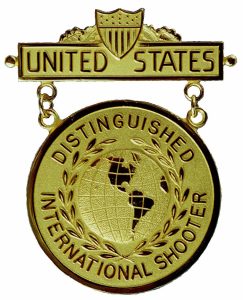
Gold Distinguished Marksman Badges are the highest and most prestigious marksmanship awards authorized by the U.S. Government. The Distinguished International Shooters Badge is arguably the most difficult of the Distinguished Badges to earn because International Distinguished shooters must not only qualify for a U. S. National Team but must then produce medal winning performances in international championships where the best shooters in the world participate. The Civilian Marksmanship Program, which now administers the Distinguished Badge program, recently resumed the presentation of Distinguished International Shooter Badges (USDISB) after a long program break. During this interim, the CMP staff had to recover many years worth of data that was lost when a service provider’s computer crashed. A new database with the records of athletes who earned points that count towards the awarding of this badge has been re-established and International Distinguished Badges are being awarded again.
The U. S. Government’s Distinguished Badge program began as a military awards program, but it ultimately became an esteemed awards program for all U. S. citizens. Distinguished Badges affirm our country’s respect for great marksmanship, recognize shooters who consistently place at the top in the most important competitions and promote marksmanship skill development among U. S. citizens. The first Distinguished “gold badges” were awarded to Army marksmen in 1884. In 1891, the program expanded to offer separate Distinguished Rifleman and Distinguished Pistol Shot Badges. The first U. S. Distinguished International Shooter Badges were awarded in 1963.
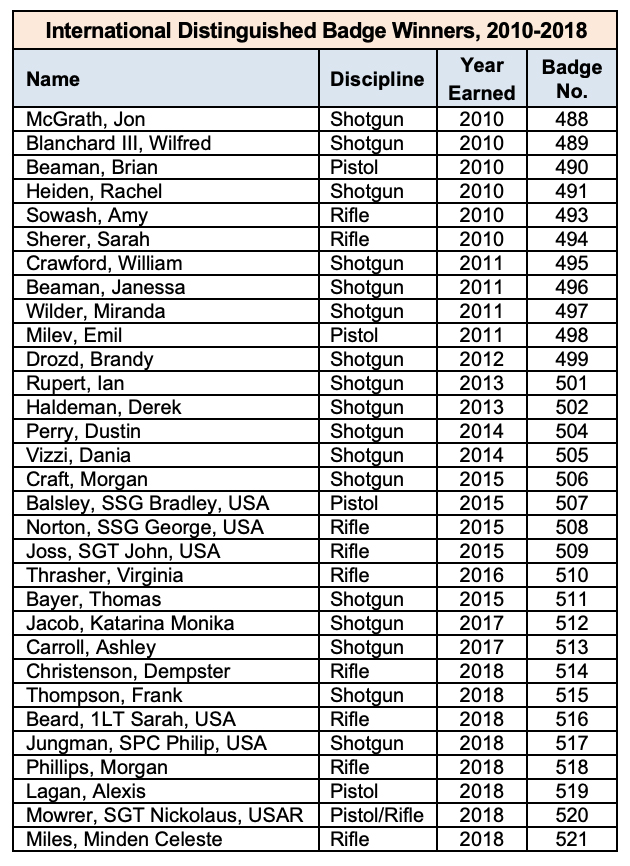
The completion of this new database has now enabled the CMP to identify athletes who earned U. S. Distinguished International Shooters Badges between 2010 and 2018 that were not previously awarded. The list published here identifies all athletes who reached the 30-point threshold during this period, including those who have already received their badges. Their names are listed with their shooting disciplines, years when they earned their badges and badge serial numbers.
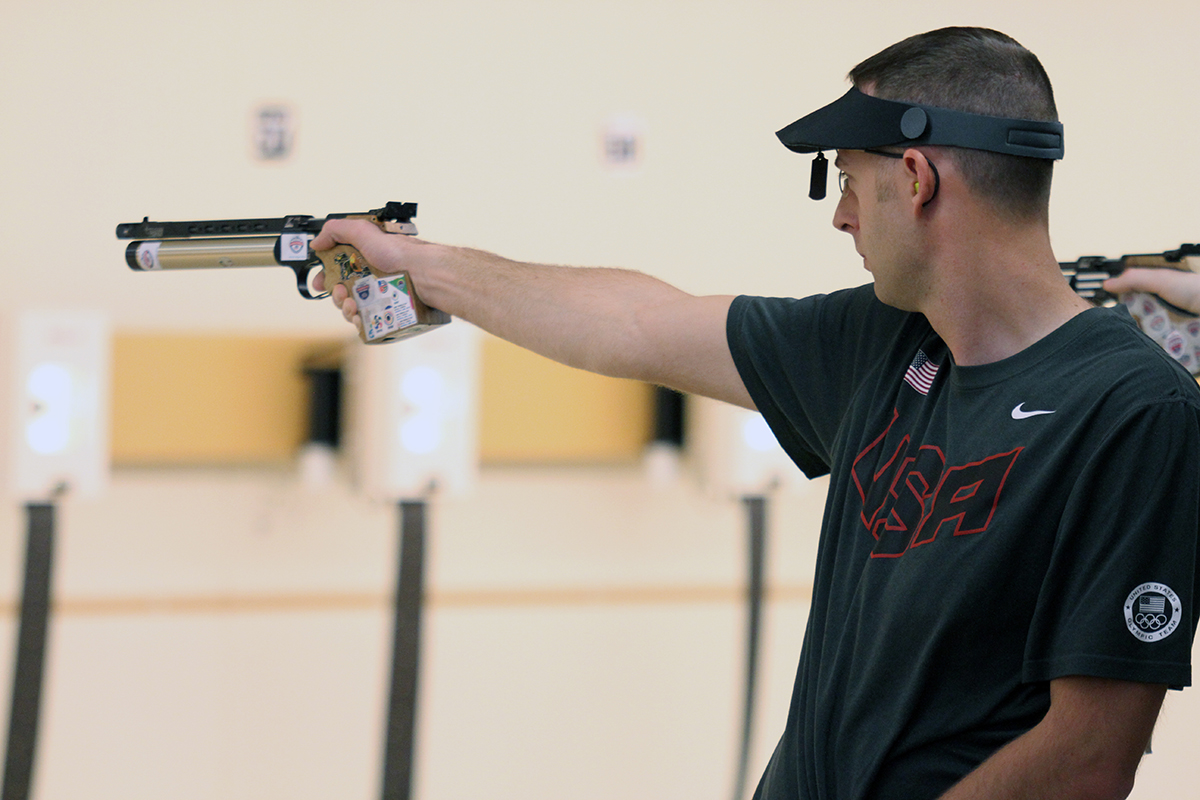
Nick Mowrer’s achievement in earning the International Distinguished Badge is particularly significant because this makes him a rare Triple Distinguished shooter. He earned his Distinguished Rifleman Badge as a junior in 2005 and his Distinguished Pistol Shot Badge in 2013. Mowrer’s accomplishment is also unique because he is the only known athlete to have earned International Distinguished credit points in more than one shooting discipline. Mowrer earned points in both rifle and pistol. The updated list now also includes a father-daughter combination. The father, William Beard, earned his International Distinguished Badge in 1982. The daughter Army 1LT Sarah Beard went over the 30-point threshold during the 2018 Championship of the Americas to become the second International Distinguished shooter in their family.
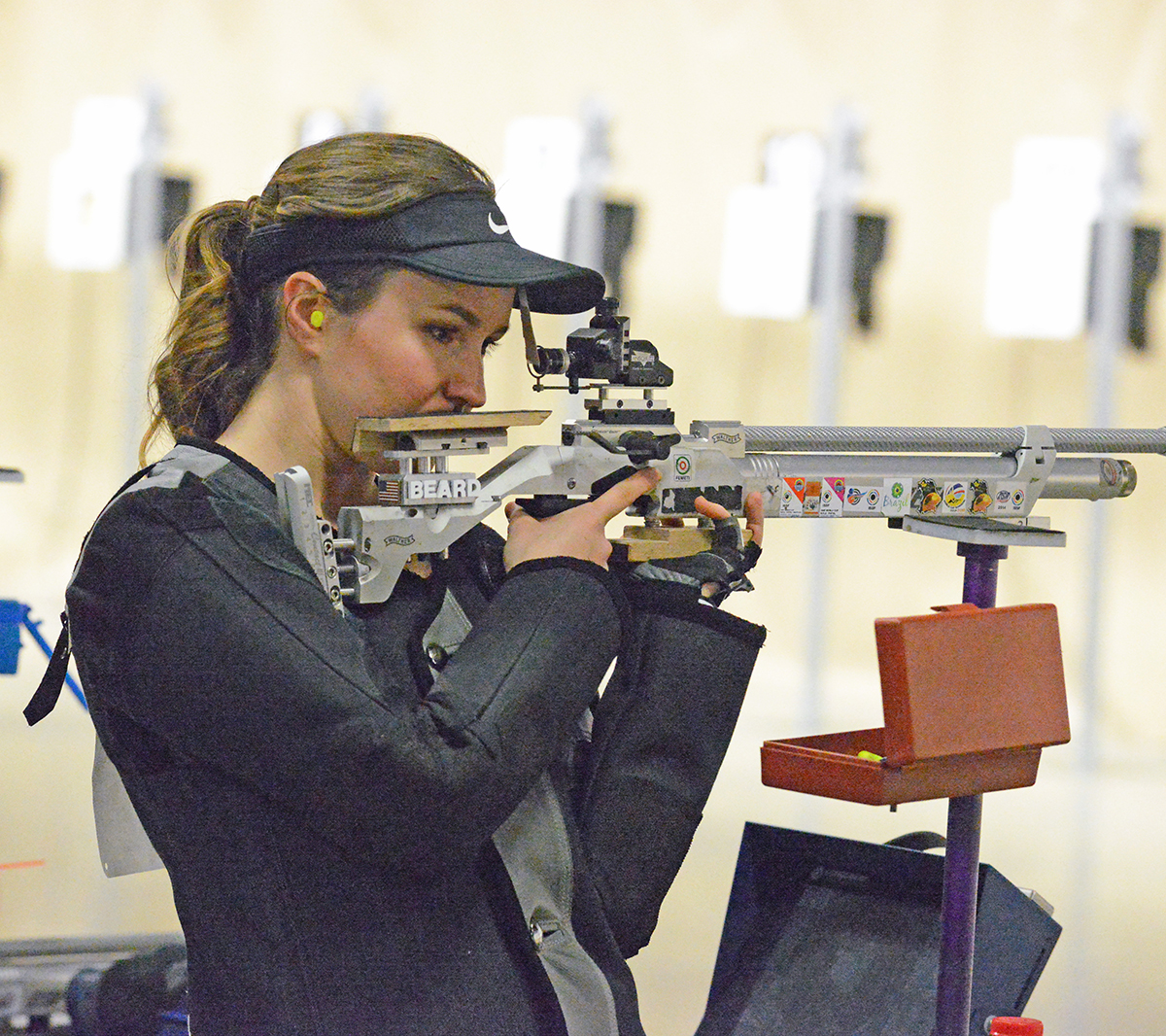
The International Distinguished Badge was inaugurated in 1963 at the height of the cold war when shooters from the Soviet Union (USSR) were dominating Olympic and World Championship competitions. The purpose of this badge was to encourage more U. S. citizens to dedicate themselves to doing the intensive high-performance training necessary to win medals in international competitions. An Executive Order signed by President Dwight D. Eisenhower had already established the U. S. Army Marksmanship Unit in 1956 and had given it a mission of winning international competitions. To further U. S. efforts to excel in Olympic and World Championship competitions, the National Board for the Promotion of Rifle Practice (NBPRP), which operated as a Department of Defense organization, recommended the creation of the International Distinguished Badge. That recommendation was approved in 1962 and in April 1963, President John F. Kennedy presented the first International Distinguished Badge to Gary Anderson, after he won four World Championship gold medals in the 1962 World Championship. Anderson later became the CMP Director of Civilian Marksmanship and is now the CMP’s Director of Civilian Marksmanship Emeritus.
The original criteria for receiving the badge was to win a gold, silver or bronze medal in an Olympic, World Championship or Pan American Games individual or team event. The first 28 badges were awarded in 1963 to athletes who won individual or team medals in the 1962 World Championship. That Championship marked an important milestone in U. S. marksmanship history because NBPRP and U. S. Armed Forces support was instrumental in sending a full, well-prepared USA team to Cairo to challenge the then dominant USSR team. After those initial badges were awarded, badge recognition was made retroactive to USA shooters who won medals in earlier international competitions. The oldest badges date back to the 1920 Olympic Games. With the advent of the Championship of the Americas in 1973 and ISSF World Cups in 1986, award criteria for the International Distinguished Badge were modified to establish the current 30-point requirement that awards different point values for medals won in championships governed by the International Shooting Sports Federation (ISSF).
In 2013, the International Distinguished program was expanded to include medal-winning performances in competitions governed by World Shooting Para Sport (WSPS is the world governing body for Paralympic shooting). U. S. athletes who win medals in the Paralympic Games, WSPS World Championships and WSPS World Cups are eligible to win International Distinguished Badges. The first International Distinguished Badge earned by a Paralympian was presented to Roger Withrow, who won a gold medal in the 1984 Paralympic Games. Army Staff Sergeant John Joss III became just the second Paralympian to earn the badge in 2015.
Current badge criteria also award extra credit points for establishing a new World Record (20 points or 10 points for junior records), equaling a World Record (10 points or 5 points for junior records) or for earning an Olympic Games quota place (10 points). A recent change to badge criteria awards credit points to U. S. juniors who win medals in ISSF Junior World Championships or Junior World Cups. The “International Distinguished Badge Credit Points” chart at the end of this article provides details about how credit points may be earned.
Since the first International Distinguished Badges were awarded in 1963, 495 badges have been awarded, including 121 badges awarded to women. This total covers the total scope of U. S. international shooting history from 1920 until today and includes the badges that have been or are now being awarded for athletes who earned their badges in the last decade.
The International Distinguished Badge program is part of the overall Distinguished Badge program that was originally established by the U. S. Government in 1884. The program was administered by the Department of the Army for many decades but when Congress and President Bill Clinton approved legislation to privatize the Civilian Marksmanship Program in 1996, legal authority to administer this program from the Army was transferred to the CMP. The CMP subsequently added two new badges to the program, the Junior Distinguished Badge in 2001 and the 22 Rimfire Pistol Badge in 2015. In 2019, the CMP is inaugurating a new Distinguished Marksman Badge to be awarded to shooters with disabilities who earn EIC credit points in national competitions. Today six different Distinguished Badges are awarded. The chart titled “U. S. Distinguished Marksman Badges” identifies the badges now awarded through this program.
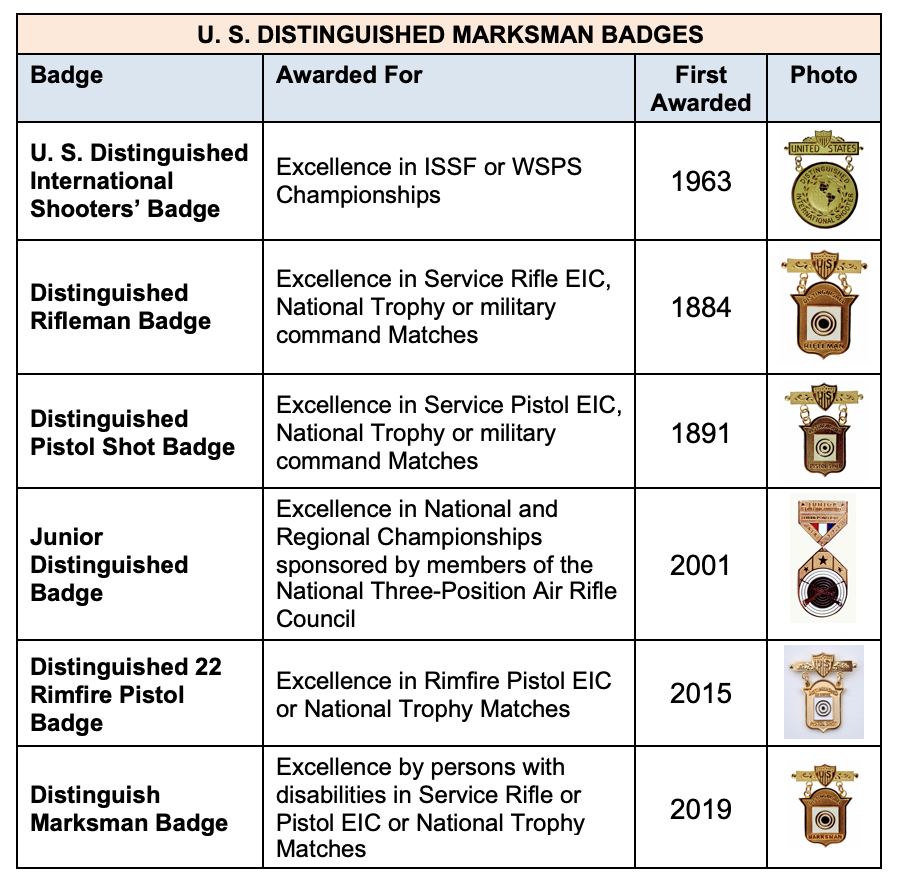
Current official regulations for the International Distinguished Badge appear in the CMP Highpower Rifle Competition Rules (https://thecmp.org/wp-content/uploads/HighpowerRifleRules.pdf) or the CMP Pistol Competition Rules (https://thecmp.org/wp-content/uploads/PistolRules.pdf). The chart below, which is published in these regulations, shows how and where USDISB credit points can be earned. A total of 30 points are required to earn the badge.
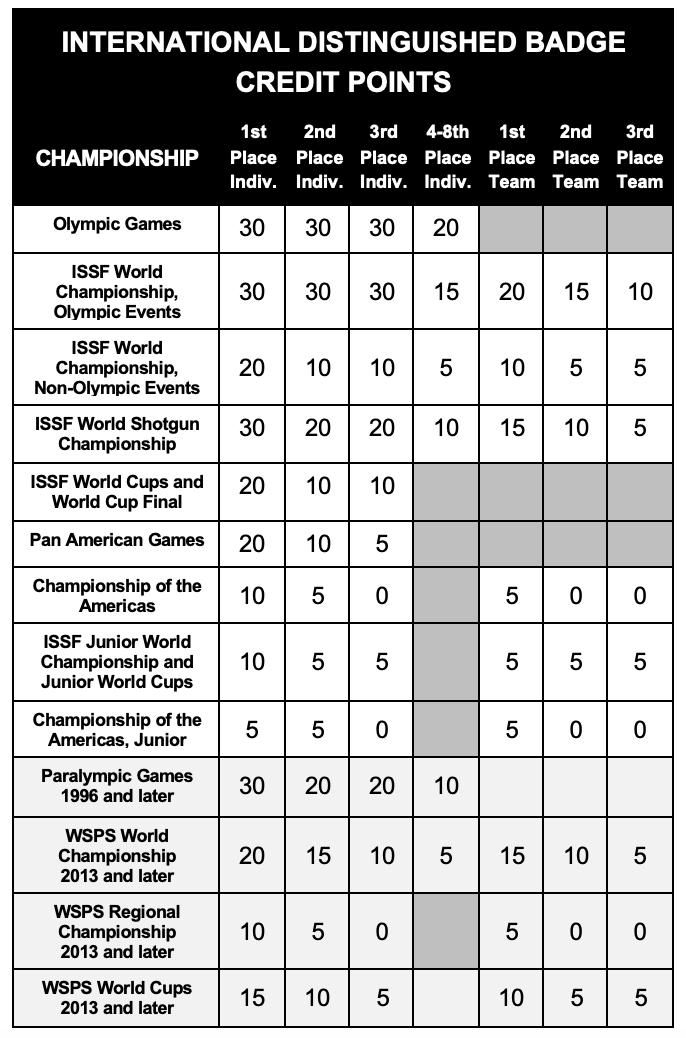
Any shooters who have earned EIC points in international competitions or in other Distinguished Badge programs can check their personal records on the CMP webpage at http://ct.thecmp.org/app/v1/index.php?do=reportShootersWithDistinguishedPoints. Anyone with questions regarding their credit point status should contact the CMP Competitions Department, Vera Snyder, vsnyder@thecmp.org, 419-635-2141, ext. 782.
I suggest that the CMP also recognize the USA International Long Range Rifle Teams (also known as Palma, Fullbore and F-Class) competing the their World Championship Matches.
I’ll forward your suggestion to our Rules Committee. Thank you!
I’d also like to see the U.S. International Muzzle-Loading Team recognized. They’ve been representing the U.S. at the World Muzzle-Loading Championships since 1976.
Mike,
I’ll pass your suggestion onto our staff that handles the International Dist Badge Program.
Thanks,
Christine
Christine what is the difference between distinguish international shooter and international distinguished rifleman,s badge
On the international distinguish rifleman’s badge Mike Dunia one badge number four and I did not see him on your list
Please advise thank you
Dennis Shea
It looks like we have a Michael Dunia listed for Rifle in 1988 and Rifle in 1960. Perhaps the listing for 1960 should be International? I’ll forward to Vera to look into. Thank you!
I am so grateful to the CMP for creating this Distinguished Marksman Badge. There have been so many
competitors (military and civilian) whose disabilities prevent them from getting into the prone position “from standing”.
I am looking forward to seeing these Badges awarded soon.
Previously the Wigger family had a father, daughter and son earn the International Distinguished Badge. Father, Lones, in 1963; daughter Deena in 1983; and son Ron in 2002.
Congratulations to both these Marksman families!